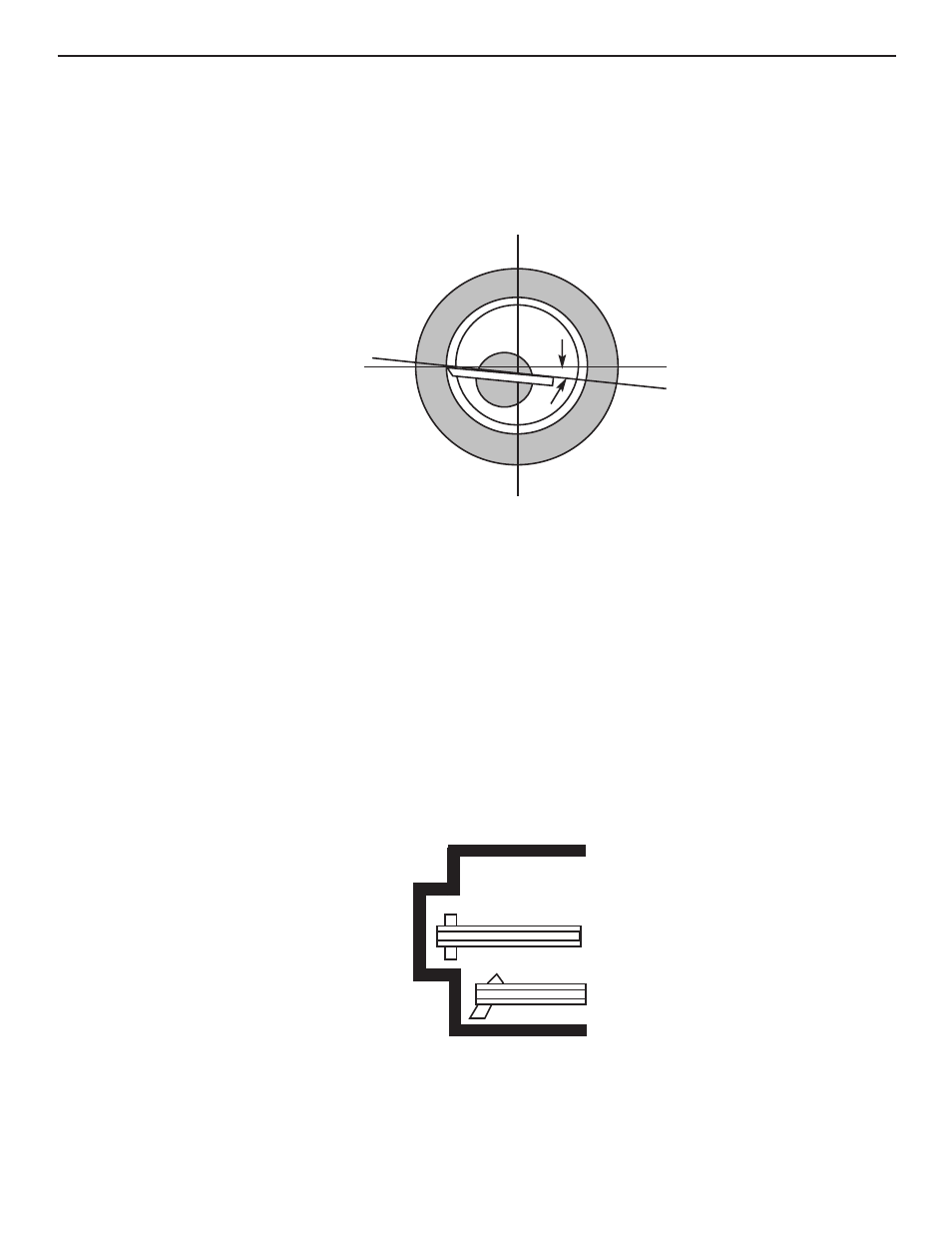Smithy Midas 1220 XL User Manual
Page 81

tool clearance. Except when using the adjustable boring tool (usually for very large
diameter work), feed the bar into the hole, parallel to the holes axis. The cutting edge
engages the work along a line in the mounted plane of the lathe centers with the bar
positioned to give the cutter a top rake of approximately 14° from the radius at the
cutting point (Figure 16.4). This takes into consideration the ground angle (top rake) of
the cutter itself.
Figure 16.4 The cutting edge engages the work piece along a line in the
mounted plane of the lathe centers.
For straight longitudinal cuts, you can hold the cutter close up, therefore more rigidly, if
it's at a 90° angle to the bar. For machining ends of a bar, however, you need a boring
bar that holds the cutter at an angle or angles so the cutter extends beyond the end of
the bar (Figure 16.5). For maximum visibility, position the cutting edge at the near side,
parallel to the centerline.
The rules that apply to external turning apply to boring as well, except-as noted earlier
where the rake angles differ. The rake angles are governed by cutter type and bore
diameter. Feeds must be lighter to keep the tool from springing. This is especially true
when enlarging out-of-round holes, when you take several small cuts rather than one
heavy cut.
Figure 16.5 To machine ends of a bar, use a boring bar that angles
the cutter so it extends beyond the bar.
16-3
Or Visit www.smithy.com
Lathe Drilling and Boring